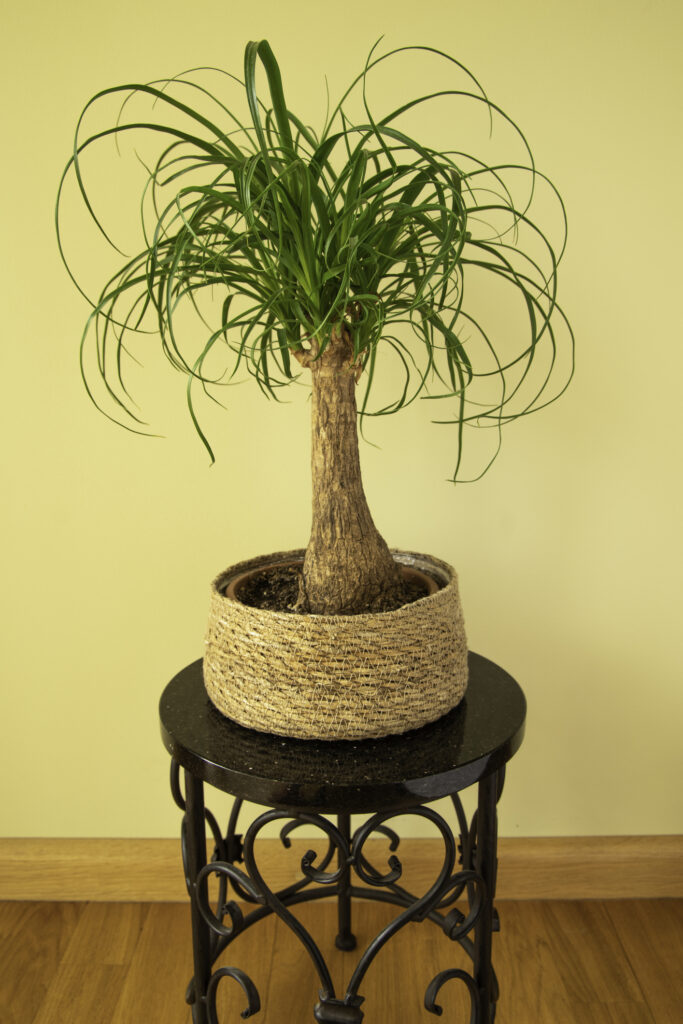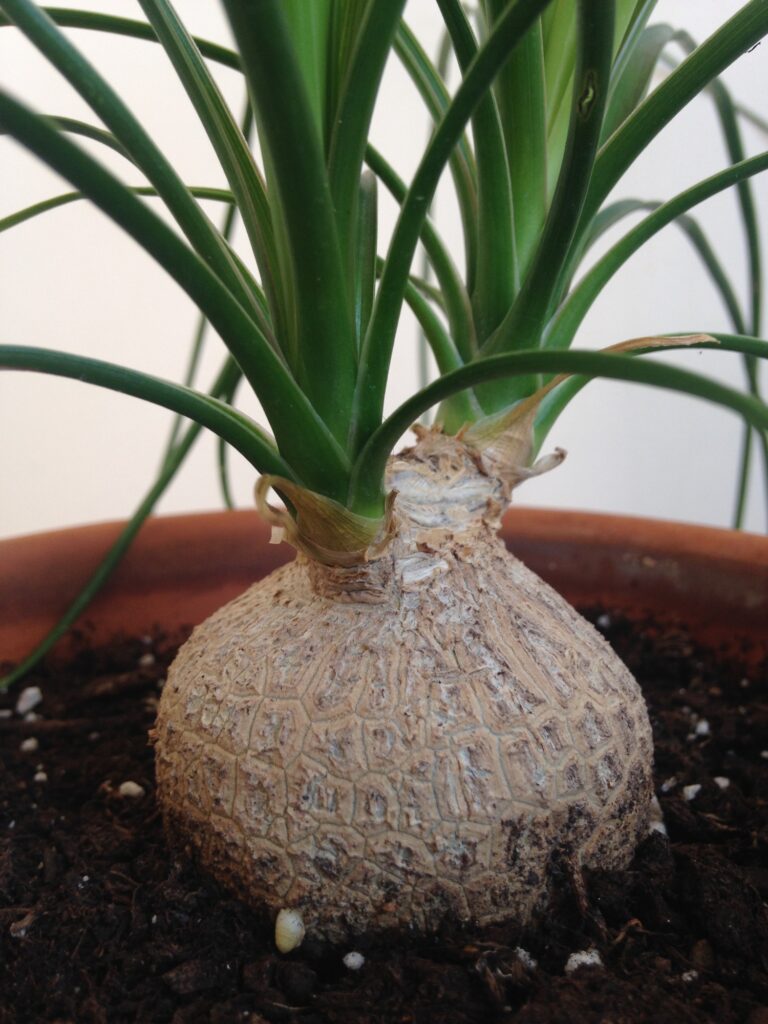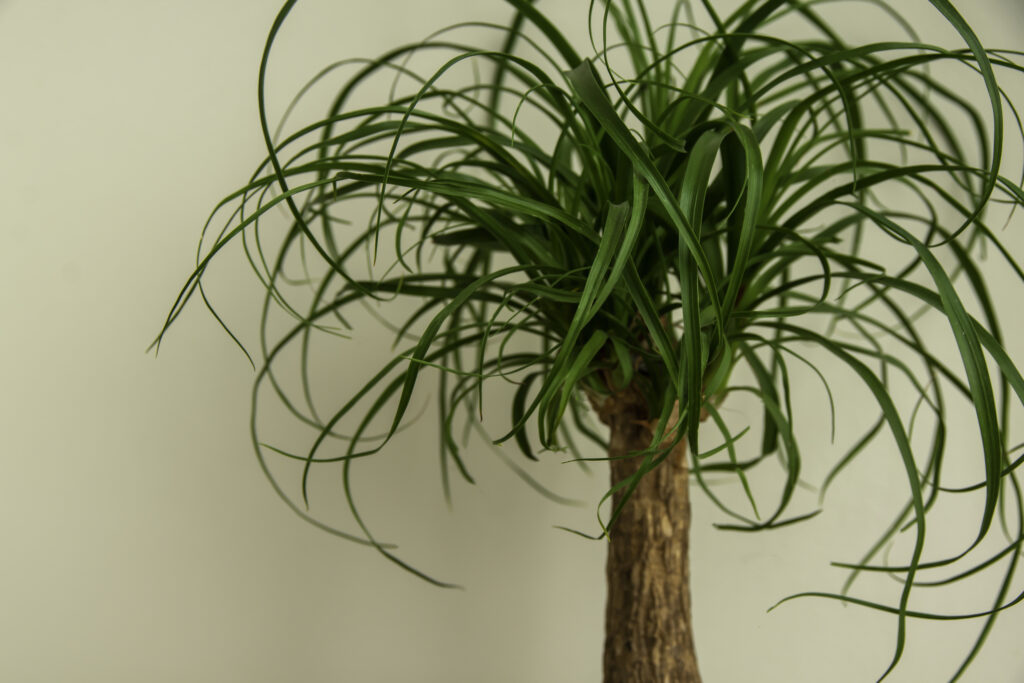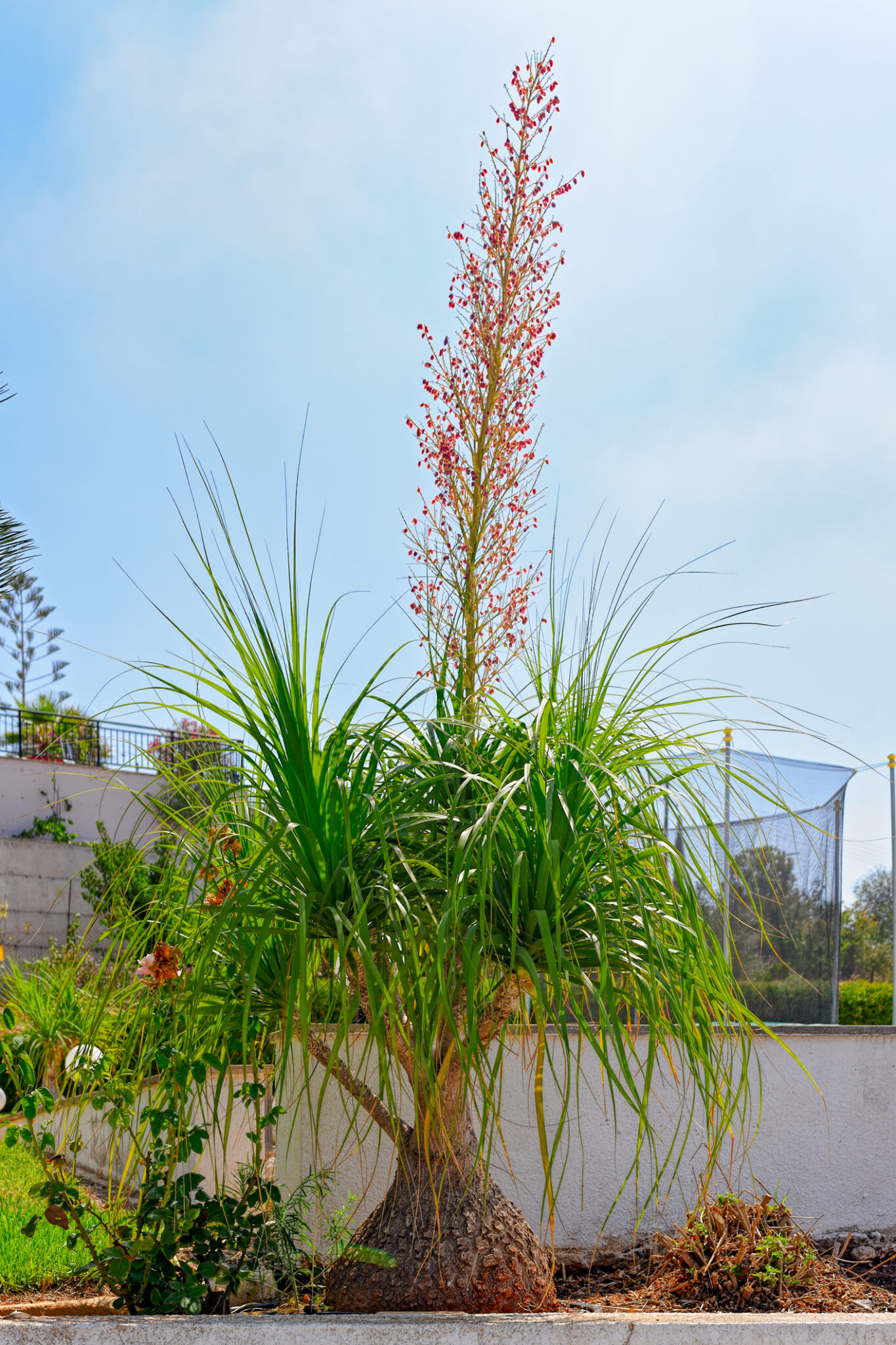I really enjoy eye-catching plants with equally dramatic names. Ponytail Palm is one of those plants. With its foliar updo resembling a ponytail, this plant lights up the Southern California garden. Even better, growing Ponytail Palm is easy and the plant is something many SoCal gardeners seek—drought tolerant.
Despite its common name, Ponytail Palm isn’t a palm, but rather a succulent. The botanical name is Beaucarnea recurvata (or Nolina recurvata). Ponytail plant is in the Agave family and gets its palm tree designation from its palm tree-like look.
Beaucarnea recurvata Central American
A slow-growing, tropical tree, Ponytail Palm is native to areas of Central America where the plant reaches more than 15 feet tall. Ponytail Palms can grow equally impressive heights outdoors in Southern California.

Growing ponytail palm outdoors can also produce a stunning floral display when the plant is mature and happy. It’s a good thing when the Beaucarnea recurvata flowers, as the resulting seeds can be harvested for propagation.
“Ponytail Palm is listed as endangered for risk of extinction in its native habitat,” says Justin Hancock, Senior Brand Marketing Manager, Costa Farms. One of the largest horticultural growers in the world, Costa Farms cultivates thousands of plants, including Ponytail Palm.

Beaucarnea recurvata Trunk
Beaucarnea recurvata isn’t short of nicknames. You’ll also hear the tropical succulent called Elephant Foot Tree and Bottle Tree. Both common names stem from the fact that the plant has a trunk with a swollen base known as a caudex where water is stored. The caudex is somewhat wrinkled like an elephant’s foot, and it also resembles the bottom of a bottle.
On young plants, the caudex looks like an onion sitting atop the soil. When the plant matures, the caudex can reach several feet across. Clusters of strappy, green leaves swoop up from the top of the trunk, resembling a ponytail. Ponytail Palm trees have one or more trunks that rise from the swollen base. Whether the plant has one trunk or multiple, it always creates quite a show in your SoCal garden.
Ponytail Palm Care Outdoors in SoCal
“Ponytail Palm does best in frost-free regions but may survive dips around freezing temperatures if the plant is healthy and well-situated,” says Hancock, who notes that stressed or otherwise unhappy trees are more susceptible to cold injury. “If you are growing ponytail palm further inland or at higher elevations, Ponytail Palm may need protection when temperatures hit freezing,” he says. Container plants can be pulled into a garage or against the house during cold snaps.
Ponytail Palm Light Needs
Locate ponytail plant in a warm, bright area that receives sun all or most of the day. An unobstructed location on the south side of the house works well. If you choose to grow the succulent tree in a large container, move it around during the year so that it receives the most sun.

Ponytail Palm Soil
Provide Beaucarnea recurvata with well-draining soil. If planting in a container, use a potting mix that has an ample amount of a draining agent, such as pumice. If planting in the ground, amend with a 2- to 3-inch layer of pumice worked into the top 8 inches of soil prior to planting.
Ponytail Palm Watering
Ponytail Palm is drought tolerant, which means it’s important to not overwater the plant. Treat Beaucarnea recurvata as you would other succulents, only watering once the top 3 to 4 inches of soil has dried.
When growing ponytail palm in a container, wait until the first half of the soil in the pot has dried out. Use a moisture meter to check for watering readiness. If you’re unsure about watering, wait another couple days and retest the soil. You’re much better off under rather than overwatering this plant, as it is susceptible to root rot.
Fertilizing Ponytail Palm
Feed Beaucarnea recurvata once in midspring and again in midsummer with a well-balanced, organic, liquid fertilizer. Organic fertilizers are best for this plant, as they are milder and less likely to cause salt buildup in the soil.
Ponytail Palm Brown Leaf-Tips
Salty soil is bad for ponytail plant, as it will cause root dieback and brown leaf-tips, a condition the tree is susceptible to. In years with less winter rainfall in SoCal, Ponytail Palm will have more leaf-tip burn than years when there is ample rain.
Leaf-tip burn occurs because salts that naturally build up in the soil from our alkaline water and fertilizers gather at the root zone of plants when rainfall is low. Once we get substantial rainfall—like this winter—salts are pushed below the root zone. The result is plants that experience less leaf-tip burn come spring and summer.
Beaucarnea recurvata Pests and Diseases
When grown outdoors, Ponytail Palm experiences few, if any, pests. Occasionally, you may have an issue with spider mites, which like dry conditions. If that occurs, spray the plant foliage on a regular basis to keep conditions moist and treat with neem oil.
Grow Ponytail Palm Indoors
In addition to being a great outdoor plant, Ponytail Palm thrives indoors as a houseplant. Provide the plant with bright, indirect light and avoid overwatering.
Check out this video to see how to grow ponytail palm indoors.

